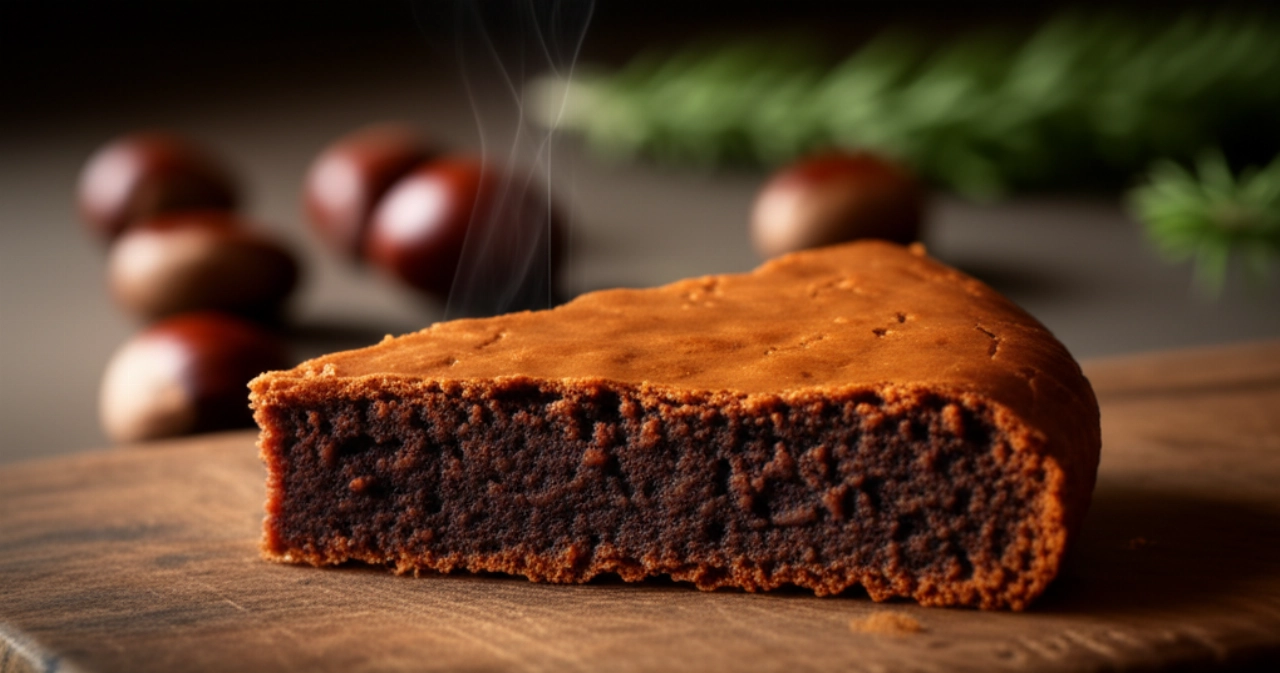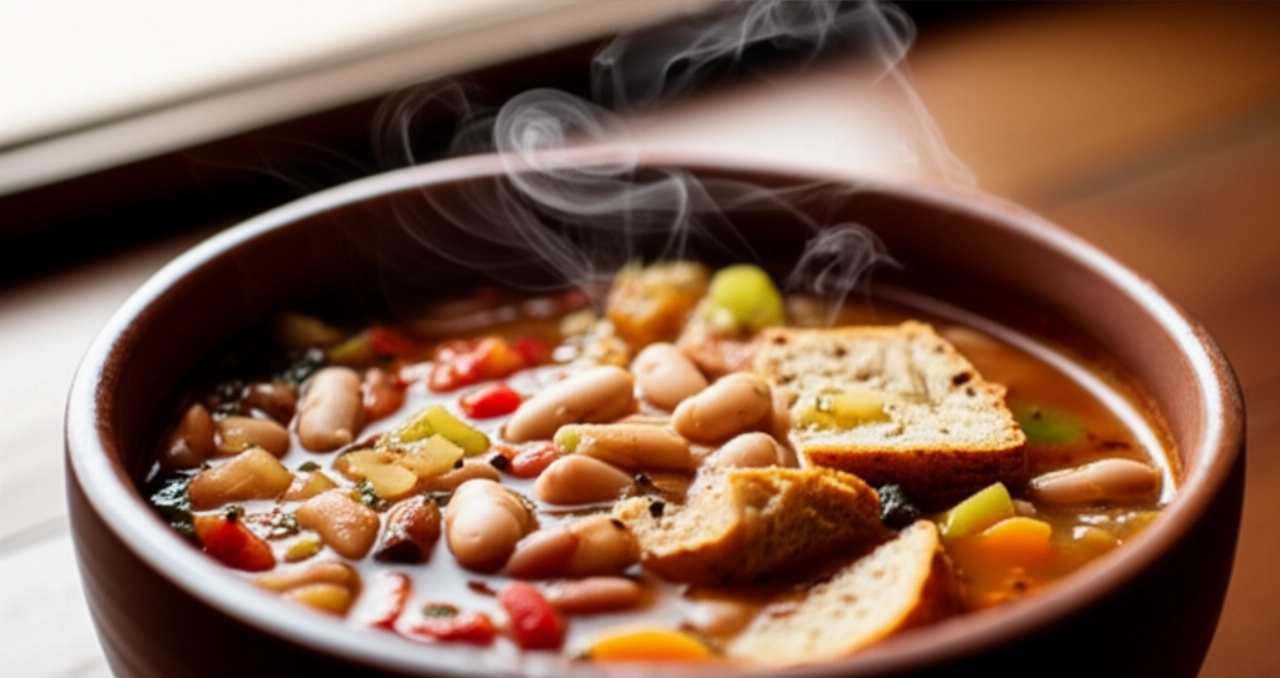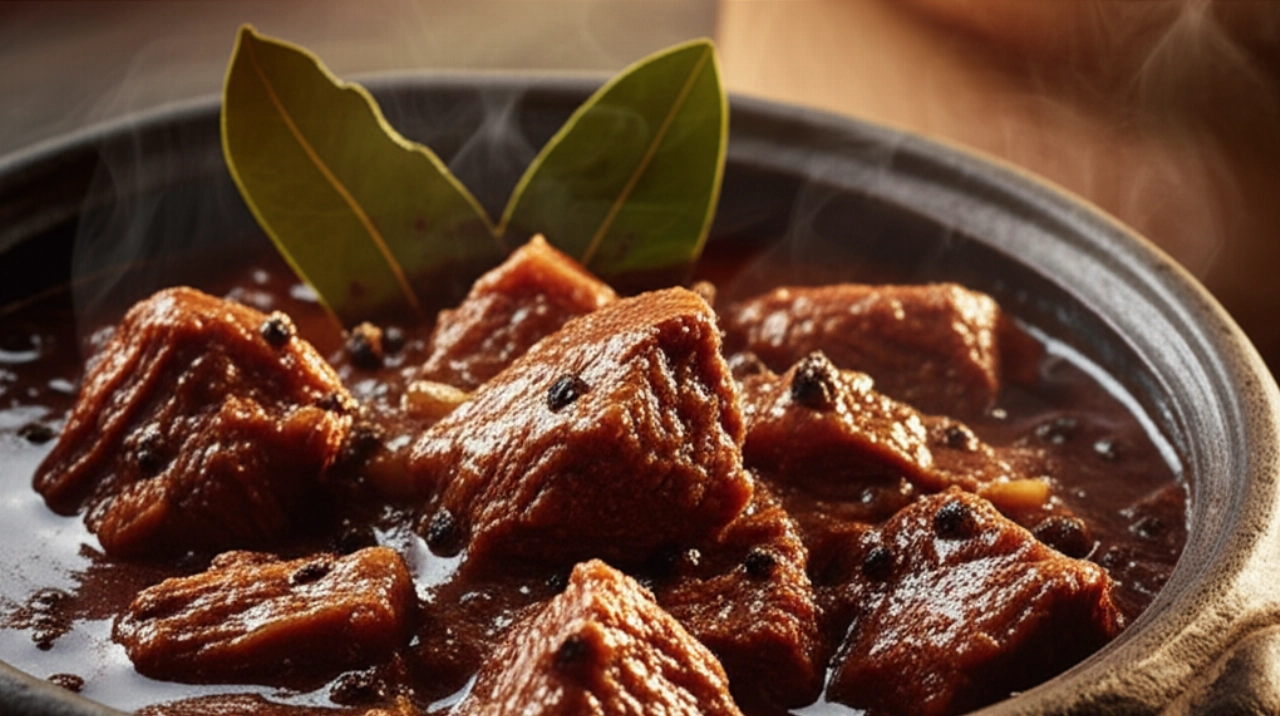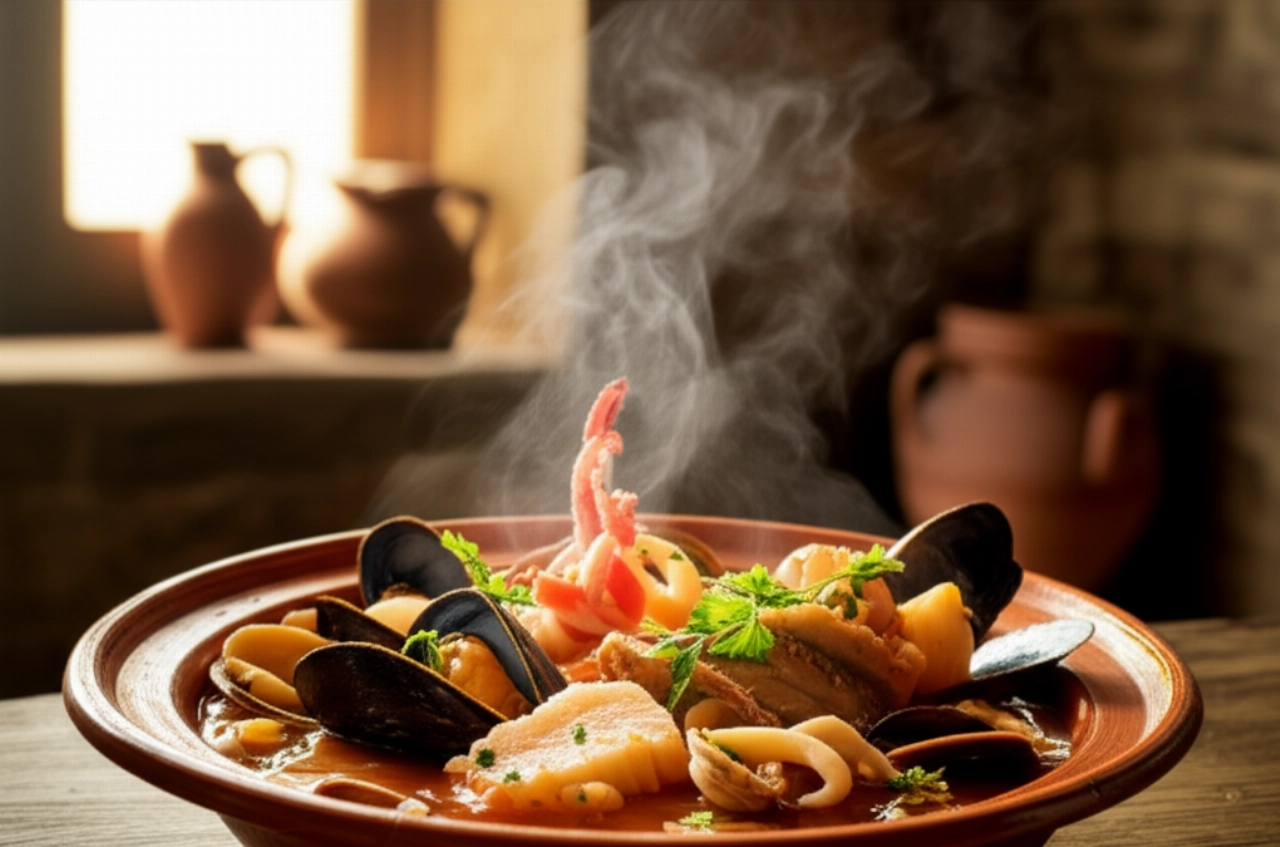There's a scent that smells of home, of Tuscany, of a warm embrace and childhood memories. It's the scent of Pappa al Pomodoro, a masterpiece of humble cuisine that, with a few simple ingredients, manages to warm the heart and soul. But how many times have you tried to make it and the result wasn't what you hoped for? Too liquid, too acidic, or simply not "that" Pappa al Pomodoro you remember, the one that makes you close your eyes at the first taste?
Make yourself comfortable. On this page, you won't just find a list of ingredients, but the definitive guide, full of tricks and tips, to prepare the most authentic and delicious Pappa al Pomodoro you've ever tasted. I'll guide you step by step to achieve a Pappa al Pomodoro that tastes like true Tuscany, with that enveloping consistency and unmistakable aroma that only the right ingredients and grandma's little secrets can provide. No more overly liquid or overly dense pappe, success is guaranteed here.
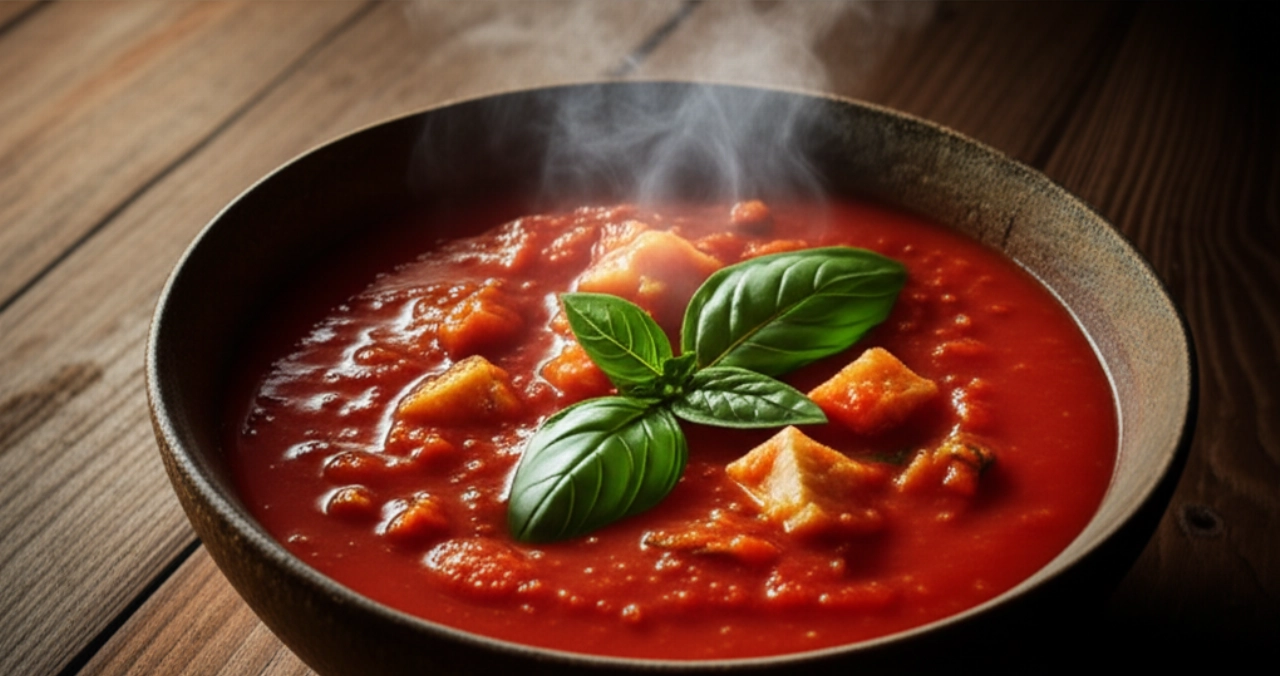
Ingredients for an Authentic Pappa al Pomodoro: The Choice That Makes the Difference
Pappa al Pomodoro is the perfect example of how the quality of ingredients, even the humblest ones, makes all the difference. It's not a matter of quantity, but of heart and careful selection. Here's what you need and why:
- Stale Tuscan Bread (approx. 300g): This is the main ingredient, the soul of the pappa. It must be strictly stale, at least 2-3 days old, and unsalted. Tuscan bread is perfect because it has a compact crumb that absorbs liquids well without falling apart too much, and its lack of salt balances the savoriness of the broth and tomato. Do not use fresh or overly salted bread, you would ruin the consistency and flavor.
- Quality Peeled Tomatoes (800g): Choose a good product, perhaps San Marzano or another flavorful and pulpy variety. They are the heart of the flavor. If it's in season, you can use fresh, very ripe tomatoes (approx. 1 kg), blanched, peeled, and deseeded.
- Vegetable Broth (approx. 1 liter): Prepare a light and flavorful vegetable broth, perhaps with carrot, celery, and onion. It is essential to give depth of flavor to the pappa, much better than plain water.
- Garlic (2 cloves): Don't overdo it, it should perfume, not overpower.
- Fresh Basil (a nice bunch): Basil is the aromatic soul of Pappa al Pomodoro. Use it generously and only fresh; dried leaves don't do it justice.
- Extra Virgin Olive Oil (generous amount): Choose a quality oil, Tuscan if possible. It is a key ingredient, not just a simple condiment.
- Salt and Black Pepper: To taste, to balance the flavors.
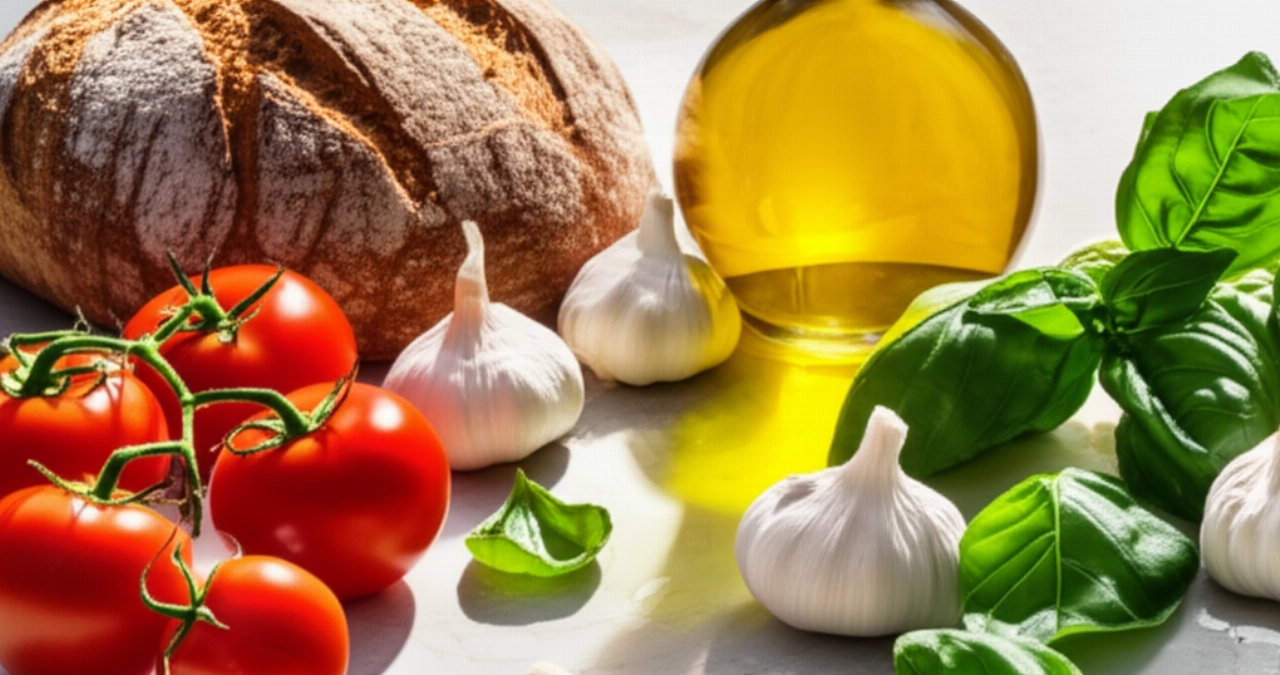
3 Common Mistakes in Pappa al Pomodoro (and How to Avoid Them)
Even such a simple dish can hide pitfalls. But don't worry, your grandma chef is here to reveal the tricks and help you avoid the most common missteps:
- Using Fresh or Wrong Bread: If you use fresh bread, the pappa will become a shapeless, gummy mush, it won't absorb flavors well, and it won't have the right consistency. Stale bread, especially Tuscan bread, is essential because it has a structure that softens but maintains a certain "tenacity," absorbing the sauce without completely falling apart.
- Not Sautéing the Garlic Well or Burning It: The garlic should slowly turn golden in the oil, releasing all its aroma. If you burn it, it will give a bitter taste. If you don't sauté it enough, it won't release its aroma. Remove it before adding the tomatoes if you don't like finding it in the dish.
- Adding All the Broth at Once: Pappa al Pomodoro is not a liquid soup. The broth should be added gradually, a little at a time, stirring and waiting for the bread to absorb it. This allows you to control the consistency and achieve that enveloping creaminess, not a watery broth.

The Extra Touch: The Secret My Tuscan Grandma Handed Down to Me
My grandmother, a true master of Tuscan cuisine, always said that Pappa al Pomodoro isn't cooked, it's "cuddled." Her most precious secret was twofold: patience and the final rest. She would prepare the pappa in the morning to eat it for lunch or even dinner. This resting time allowed the bread to fully absorb all the flavors of the tomato and basil, creating a perfect harmony and an even more velvety consistency. And then, a generous drizzle of good quality extra virgin olive oil, just before serving. This isn't a detail; it's the final signature that enhances every single flavor.
Let's Prepare Pappa al Pomodoro Together: The Step-by-Step Guide
Now that you know all the secrets, let's get cooking. I'll guide you step by step, without rushing, for an impeccable result.
- Prepare the Bread: Cut the stale bread into slices about one centimeter thick, or into cubes. The shape doesn't matter, the important thing is that it's stale. Set it aside.
- The Aromatic Sauté: In a thick-bottomed pot (ideally earthenware or cast iron), pour a generous amount of extra virgin olive oil. Add the whole garlic cloves (or finely chopped, as you prefer) and let them gently brown over very low heat. They should release all their aroma without burning. If you use whole garlic, you can remove it once golden.
- Add the Tomatoes: Pour the peeled tomatoes (roughly crush them with your hands or a fork) into the pot. Add a few fresh basil leaves and a pinch of salt. Let it cook over medium-low heat for about 15-20 minutes, stirring occasionally, until the sauce has slightly thickened and released its intense aroma.
- It's Bread Time: Add the cut stale bread pieces to the tomato sauce. Mix well to let it soak.
- The Broth, Little by Little: Start adding the hot vegetable broth, one ladleful at a time. Stir continuously with a wooden spoon, pressing the bread against the sides of the pot to help it break down and absorb the liquid. Don't rush! Add more broth only when the previous amount has been completely absorbed. Continue this for about 20-30 minutes, or until the bread has completely broken down and you have obtained a creamy and homogeneous, but not liquid, consistency. The pappa should be thick, "spoonable."
- The Final Touch: Turn off the heat. Add plenty of fresh basil torn with your hands (don't cut it, it oxidizes!) and a generous drizzle of raw extra virgin olive oil. Stir gently.
- The Magical Rest: Cover the pot and let the Pappa al Pomodoro rest for at least 15-30 minutes. This step is crucial: the flavors will meld together and the consistency will become even more perfect. If you can, prepare it a few hours before or even the day before; it will be even better!
- Serve and Enjoy: Serve the Pappa al Pomodoro warm or at room temperature, with another drizzle of raw oil and, if you like, a grind of fresh black pepper.
Tips and Frequently Asked Questions about Pappa al Pomodoro
I know you might still have some doubts, and that's perfectly fine! Here are the answers to the most common questions to ensure your total success:
- Can I use fresh tomatoes instead of peeled ones?
- Absolutely! If it's in season and you have San Marzano tomatoes or other ripe and flavorful varieties available, feel free to use them. You'll just need to blanch, peel, and deseed them before adding them to the sauté. The flavor will be even more vibrant.
- Can I freeze Pappa al Pomodoro?
- Certainly! Once completely cooled, you can portion and freeze it in airtight containers. It keeps for about 2-3 months. To thaw, leave it in the refrigerator overnight or gently heat it on the stove, adding a little broth if it becomes too thick.
- What bread should I use if I can't find Tuscan bread?
- If you can't find Tuscan bread, look for a rustic sourdough bread, without added salt and with a compact crumb. The important thing is that it's stale and not too "airy" inside, otherwise it will fall apart too much.
- Why is my pappa too liquid or too thick?
- Consistency is key! If it's too liquid, you probably added too much broth at once or didn't cook it long enough. Continue cooking over low heat, stirring, until it reaches the desired density. If it's too thick, add another ladleful of hot broth and stir well until you get the perfect creaminess.
- Can I prepare it in advance?
- In fact, I highly recommend it! Pappa al Pomodoro is one of those dishes that improves with resting. Prepare it a few hours before or even the day before; the flavors will have time to meld perfectly. Gently reheat it before serving, adding a drizzle of raw oil.
There you have it! Now you no longer just have a recipe, but all the secrets to bring a dish to the table that tastes of home, tradition, and love. Pappa al Pomodoro is true comfort food, a warm embrace in a dish, and with these tips, success is guaranteed.
Don't be afraid to experiment. Cooking is an act of creativity and generosity. But start with this solid base, and you'll see that applause won't be lacking. Your Pappa al Pomodoro will be legendary!
Have you tried our recipe? We're very curious to see your masterpiece! Leave a comment below, tell us how it went, or share a photo on Instagram by tagging @CercaRicette.it. If you loved this Pappa al Pomodoro, you can't miss our recipe for Tuscan Ribollita, another wonder of our tradition, or for a main course to accompany it like our Peposo dell'Impruneta. Enjoy your meal!


